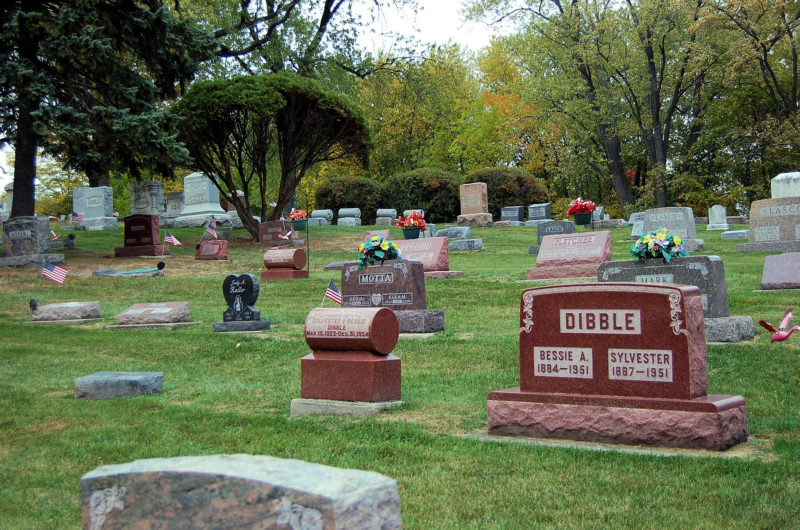Can a cemetery reveal something about the culture of a place? Matt Geiger thinks so. His travels around the country have led him to a theory about Midwestern graveyards.
Graveyards in the American Midwest feel like missed opportunities. The neatly mowed rows of economical, hardy, unpretentious headstones.
To walk through a graveyard in Wisconsin is to see 300 dead people trying desperately not to outdo one another. The markers are neat, tidy, and all nearly identical. You can just see the dearly departed, while still alive, clutching a loved one’s hand as the light inside starts to flicker, wheezing: “Please, when you select my headstone, make sure it’s… unremarkable.”
These are the types of people who, when asked to “pick a number,” will invariably go with “6,” because that’s surely enough. Anything more, to a practical Midwesterner, seems greedy, presumptuous, or just plain wasteful.
I’ve been to other parts of the country. I’ve even lived in some of them, including, somewhat regrettably, Florida, where the swampy ground makes traditional burials a mucky, challenging endeavor. When you try to give people there a decent burial, the earth tends to spit them back out, essentially saying: “No thanks.”
But at least in the swampy southern hinterlands, graveyards are beautiful, mossy, and pleasantly ostentatious. Like little jungle gardens where stone mausoleums and statues of angels and saints grow crookedly out of soggy soil and slowly disintegrating human lives.
In Wisconsin, humility is just in people’s DNA. Asking them to suddenly be grand once they die is like asking them to come back as zombies and open up a profitable unicorn farm.
There is a place called the Dickyville Grotto. It looks like any old Catholic shrine, dedicated to God and country, with the notable exception that every square inch is festooned with things like petrified sea urchins and fool’s gold. It’s wonderful, in large part because visitors leave knowing exactly what it would look like if Saint Francis and the sea god Poseidon were involved in a violent head-on collision. It’s not actually a graveyard, though.
Personally, I’ve always wanted to be shot out of a cannon, or tied to the mast of a ship that’s then set on fire with burning arrows, when I die. “That way people will remember me!” I think, briefly forgetting that I will surely feel little, or no, vindication when that day actually comes.
I worry my life will not be worthy of note, so I’m just skipping ahead and planning a death that I think people can get excited about. So, maybe these practical Midwesterners have boring graveyards because they’re generally happy with their body of work while alive. Maybe they aren’t worried they will be forgotten, because, along with frugality, an inability to get a haircut not from the 1930s, and the almost pathological compulsion to fry cheese, they know they’ve made a mark, in the people they were kind to, or the ones they nourished and nurtured.
Maybe I won’t need to be shot out of a cannon when I die. Maybe my life will be enough.
Or, and I’m fairly certain this is correct, the best option is to live the way Midwesterners do. To be kind, and measured. When life does end, the time to start acting like an ancient, egomaniacal Babylonian king will finally be at hand.
In death I can have an enormous, colorful monument built to celebrate my plainspoken, practical approach to life, and my incredible, towering modesty. Then I can have that monument slathered in luminescent pink, covered in seashells, and shot out of a cannon, high into the heavens. It will be a bold, italicized, underlined exclamation point on the end of a solid, sensible story.










